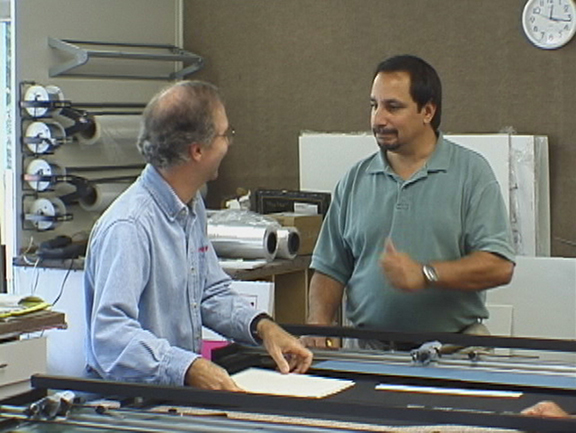
By Paul Cascio
The framing and art industry has undergone a number of changes in recent years. Some of these were by design, while others were forced. Many were positive, perhaps even revolutionary, including innovations in technology. Most were evolutionary, brought on by the ever-growing power of the Internet. Yet other changes, like the proliferation of chain stores, have been a scourge for the many small businesses that, even today, form the majority of our industry.
One thing is for certain—it’s still a jungle out there. But it’s a different jungle. Today’s successful frameshop and gallery owners are a new and different breed from those who ruled the industry back in the ’70s, ’80s and ’90s. Today’s owners are smarter, focused on increasing market share and profitability, and have more business savvy. They enjoy making money at least as much as they enjoy making frames.
The industry is attracting a new generation of entrepreneurs who have been successful in other careers. They’re aggressive marketers and promoters who may be competitive by nature. Unlike framers of old, they refuse to hide their head in the sand but instead choose to stand up to bullies and, in some cases, beat them at their own game. They know who the competition is, and they’re going after them.
They’re guerrillas.
They recognize that potential new customers shop at big box stores. And that’s exactly who they aim for. In this column, you’ll learn how they do it, and how you can do it, too.
Of course, not all successful framers operate from a storefront, and not all art dealers are found in galleries. Our industry is full of creative, enterprising and in many cases, highly successful individuals and couples who enjoy the benefits of operating from home.
Long forgotten by the trade press and often shunned by mainstream retailers, Homies comprise a huge portion of our industry. In fact, it’s been estimated that more than half of all business owners in our industry got their start working from their basement, attic or garage. This silent and under-appreciated group knows it takes a special set of skills and its own set of unique strategies to succeed as a “homie.”
But something we must all come to terms with: someday we will all retire. And this means we will likely become a homie. A home-based framing business is low risk, enjoys low overhead and can provide a very attractive retirement income in a way that’s neither stressful nor physically demanding.
Well, now that you have an idea of what the Guerrilla Framer column is all about—making money—let me warn you about what you won’t find here. You won’t learn how to cut fancy mats. You won’t learn how to join corners seamlessly or mount a bowling ball with wheat starch paste. And you won’t be told how to remove spots from anything. It’s not that I couldn’t share a few ideas on those subjects, because after all, I am framer, and with all proper modesty, a pretty good one.
Actually, I’m only a pretty good framer for a maximum of about two hours. That’s because, although I’ve never been formally diagnosed, I am certain I have Attention Deficit Disorder. In fact, I had it before it was fashionable and before it even had a name. After two hours of framing, or anything else for that matter, I have what I refer to as “The Midas Touch.” Everything I touch from that point on turns into a muffler.
So while there are many awesome framers who would love to share their technical prowess, I’ll just limit this column to trying to help you take your business to a new level of success and your enjoyment of owning a business to a new place of happiness. So, thanks for reading and I hope you’ll look for this column in the next issue. That’s when the real fun begins.
Paul Cascio is director and lead instructor of The American Picture Framing Academy at pictureframingschool.com.


